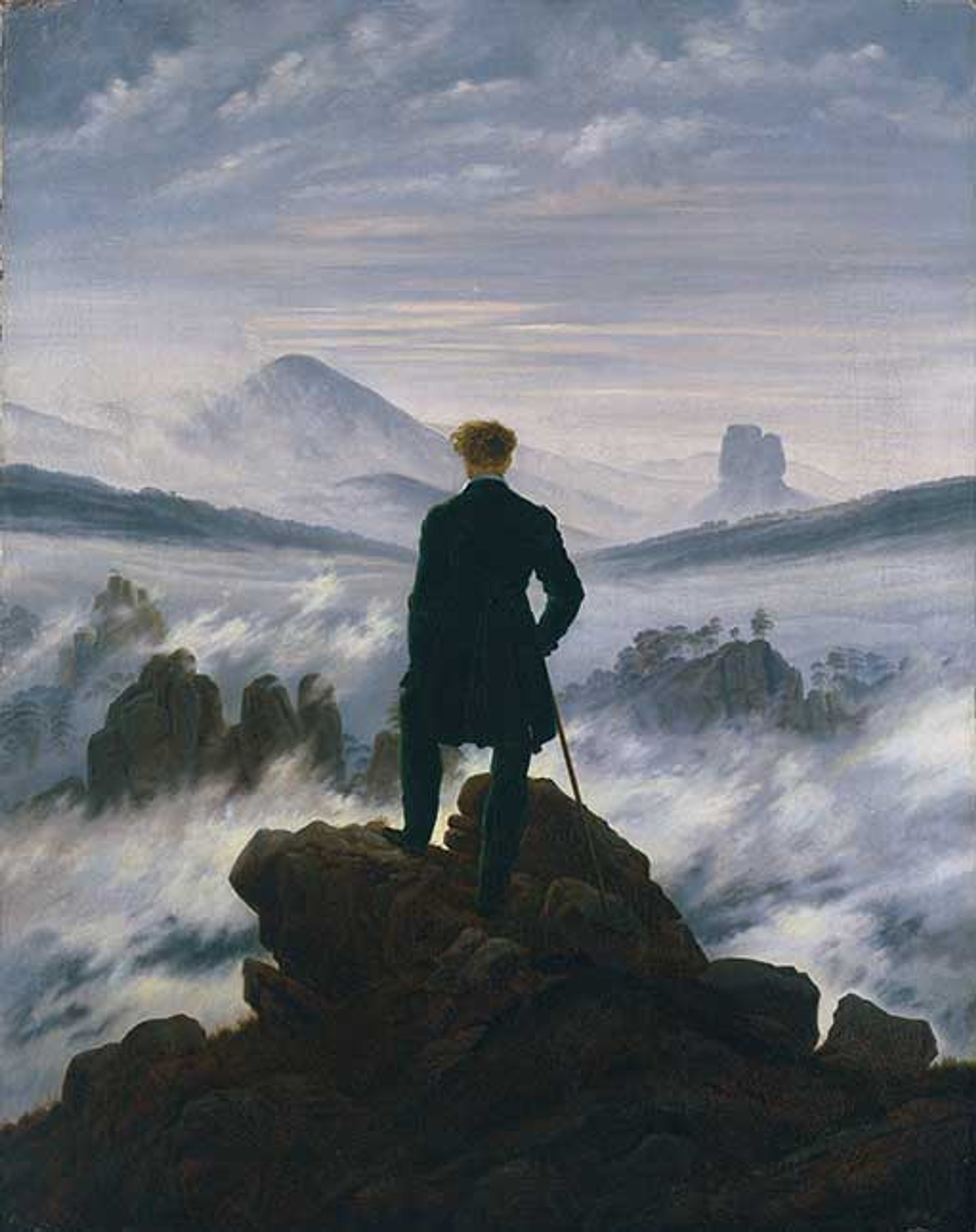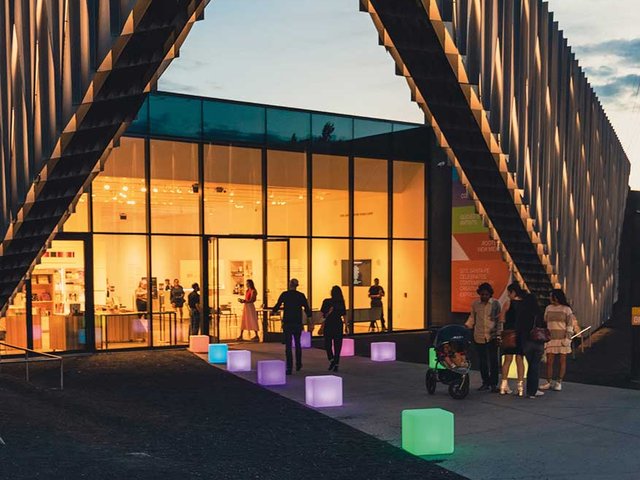London: pop goes the capital with culture of the last century
The pop culture outsiders of the tail end of the last century are being thrust into the limelight. As well as Tate Modern’s celebration of Leigh Bowery, the Hayward Gallery will host a retrospective of Linder Sterling (11 February-5 May), usually known just by her first name. Linder, who created the collaged cover of Buzzcocks’ single Orgasm Addict, uses photomontage and sculpture for her feminist polemics. Anyone interested in the roots of Pop Art should visit the Courtauld, which has the UK’s first show on Wayne Thiebaud (10 October-18 January 2026), whose bright yet simple paintings of food are a cornerstone of the genre.
Reputations will be forged, while other will be burnished from the summer onwards. Kerry James Marshall has a sizeable show at the Royal Academy of Arts (20 September-18 January). The first European retrospective of the Indigenous Australian artist Emily Kam Kngwarray will be at Tate Modern (10 July-11 January), while the Japanese portrait painter Yoshitomo Nara will spend summer at the Hayward (10 June-31 August).
More art historical tastes are catered for elsewhere. Around 40 portraits by the Expressionist Edvard Munch will be at the National Portrait Gallery (13 March-15 June). Tate Britain is running parallel shows of the Modernist Ithell Colquhoun with Edward Burra, best known for his studies of 1930s Harlem (13 June-19 October). while its promising pairing of J.M.W. Turner and John Constable (27 November-12 April) is sure to please the traditionalists.

Claude Monet’s The Canoe on the Epte (around 1890) is one of the works going on show at the Museu de Arte de São Paulo (Masp)
Photo: João Musa
São Paulo: Muholi and Monet to make a splash
The Museu de Arte de São Paulo (Masp) will complete a $33m expansion in March, reopening with several exhibitions showcasing its 10,000-piece collection, including Masp Histories (21 March-3 August). The museum will also hold a blockbuster Claude Monet show (16 May-24 August). While its thematic curatorial focus will open in autumn under the title Histories of Ecology (5 September-1 February 2026).
The Pinacoteca de São Paulo celebrates its 120th anniversary this year with several exhibitions on Brazilian contemporary art. Pop Brasil (30 May-5 October) will highlight two landmark 1965 exhibitions in São Paulo and Rio de Janeiro, Opinião 65 and Propostas, which proposed a new approach to abstract art. The shows, held against the tumultuous backdrop of the 1964-1985 military dictatorship, featured seminal political works by Hélio Oiticica and Antonio Dias. Later in the year, the museum will hold the first major exhibition on the Colombian artist Beatriz González (30 August-1 February 2026).
The Instituto Moreira Salles will hold two photography exhibitions: retrospectives devoted to Zanele Muholi (February-June 2025) Gordon Parks. And Instituto Tomie Ohtake will close two major exhibitions about Carlito Carvalhosa and Mira Schendel on 2 February.

You can see Caspar David Friedrich’s Wanderer Above the Sea of Fog (around 1817) from 8 February at the Metropolitan Museum of Art show The Soul of Nature
Courtesy Hamburger Kunsthall. Photo: Elke Walford
New York: challenging conventions in big city
There will be several significant solo shows in New York delving into the practices of artists who have challenged convention. On 19 October, the Museum of Modern Art will open Ruth Asawa: A Retrospective following its debut at the San Francisco Museum of Modern Art. From 8 February, the Metropolitan Museum of Art will host Caspar David Friedrich: The Soul of Nature, the largest US show yet on the German Romantic painter, who reimagined landscapes as a channel for human emotions. While complicated due to its later embrace by the Nazis, his art connected viewers to the natural world. Along the Hudson River at Dia Beacon, the first retrospective on Tehching Hsieh will open on 3 October, based on his gift. These year-long performances involved Hsieh living in a cage, remaining tied to yet never touching another artist and existing outdoors. He stated that these extremes reflect on existence and how we use time.

Hilma af Klint’s The Ten Largest, Group IV, No. 3, Youth (1907) is showing as part of the Swedish artist’s first major survey at the National Museum of Modern Art, Tokyo, from 4 March
Courtesy Hilma af Klint Foundation
Tokyo: Modernists and unsung pioneers highlighted in Japan
As the city’s blossoms burst into bloom, two of Tokyo’s museums will celebrate Modernist pioneers who were inspired by the rhythms of the natural world. Nestled in Ueno Park, the Tokyo Metropolitan Art Museum presents Joan Miró (1 March-6 July), a definitive retrospective that traces the Catalonian’s influence in the 20th century through representative pieces from each period in his life.
In a neighbouring district just beside the cherry tree-lined banks surrounding the Imperial Palace, the National Museum of Modern Art will host Asia’s first major survey of Hilma af Klint (4 March-15 June). Known as the ‘mother of abstraction’, the Swedish painter was crafting experiments in colour that predated famed Modernists such as Piet Mondrian and Wassily Kandinsky. As winter falls, the museum will continue to shine a light on unsung female pioneers in an exhibition of post-war Japanese women artists (from 12 December).
The clash between tradition and modernity is ever present in Tokyo, and its artistic offerings are no different. In the realm of contemporary art, the Mori Art Museum in Roppongi district presents Machine Love (13 February-8 June), a multidisciplinary show that examines the intersections of gaming, AI and art. Nearby at Ebisu’s Tokyo Photographic Art Museum, Takano Ryudai’s Living Through the Ordinary (27 February-8 June) will highlight the photographer’s epochal meditations on gender and sexuality, from the late 80s until today.
To finish off the year, there will be a sweeping show at the National Art Centre, Japanese Contemporary Art and the World 1989-2010 (3 September-8 December). Bookended by the end of the Showa era and the 2011 Tōhoku earthquake and tsunami, it will interrogate art from an era marked by significant socioeconomic changes. Through the work of both Japanese and international artists, it is sure to offer a compelling rumination on the intersection of art and politics, and Japan’s far-reaching influence on global culture today.

The Musée d’Orsay has partnered with Oslo’s Nasjonalmuseet for a show on Christian Krohg, which will include his work Albertine dans la salle d’attente du médecin de la police (1885-87)
Photo: Nasjonalmuseet, Oslo. © RMN-Grand Palais
Paris: a diverse sweep of shows in the city of light
The Musée du Louvre ushers in the new year with a stellar examination of the 13th-century Florentine master Cimabue (22 January-12 May). The show will centre around the recently restored Maestà as well as La Dérision du Christ (The Mocking of Christ, around 1280), which famously hung above the cooker in a Compiègne kitchen for decades before being acquired by the museum. From April, the Islamic art department hosts the museum’s first extensive survey of the Mamluk Sultanate of Medieval Egypt and the Middle East.
Ahead of its five-year closure for restoration, the Centre Pompidou is putting on two timely correctives. First, a 200-work survey of Suzanne Valadon (15 January-26 May), an erstwhile model for Pierre-Auguste Renoir and Henri de Toulouse-Lautrec who later garnered critical acclaim for her own painting. Second, Paris Noir (19 March-30 June) will highlight the Black artists active in the city between 1940 and 2000; many of their works have never been shown before in France.
At the Musée d’Orsay, a blockbuster on the 19th-century naturalist Christian Krohg opens on 25 March (until 27 July) in a rare partnership with Oslo’s Nasjonalmuseet. His realist depictions of daily urban travails are consistently moving. In April, the Musée de l’Orangerie takes viewers through uncharted Impressionist territory with a show framing the haze of Claude Monet’s Water Lilies not as an ocular problem the artist was dealing with, but as a useful lens to consider his influence (30 April-18 August).
Lastly, several solo shows are worth paying attention to: at the Palais de Tokyo, the poetic installations of the Vietnamese artist Thao Nguyen Phan and the work of the Swiss-Argentine painter Vivian Suter (both opening in June); the 2024 Golden Lion winner Anna Maria Maiolino at the Musée National Picasso (June-September); and the Japanese avant-garde artist Tarō Okamoto (15 April-7 September) at the Musée du Quai Branly-Jacques Chirac.





